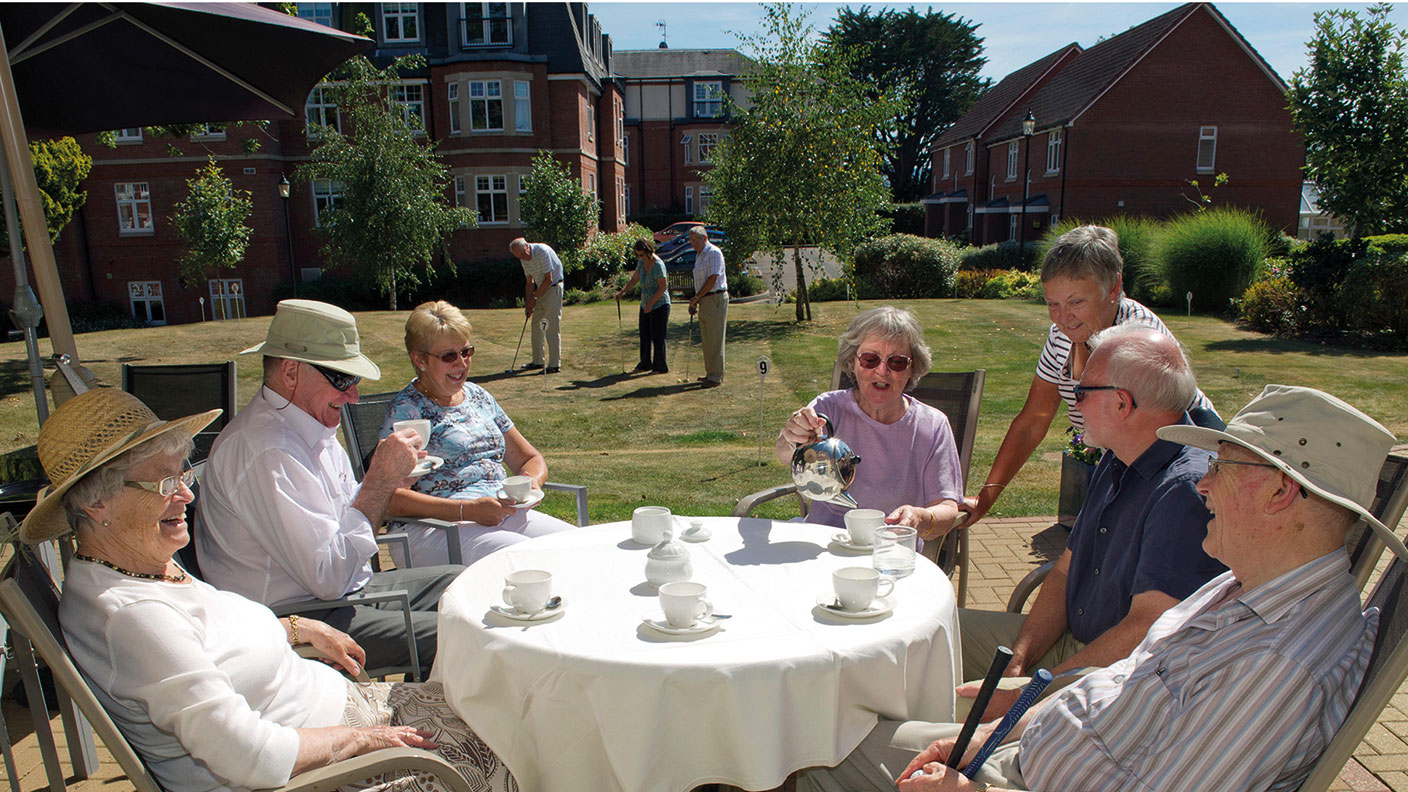
Britain has a growing shortage of affordable housing. The number of new houses registered in the UK’s affordable and build-to-rent sector last year was 42,084, according to the National House Building Council – up just 20% since 2008.
Part of the problem is that housing associations – which account for 94% of social housing in the UK – “are scaling back investment in new properties to focus on fire safety and energy efficiency”, says Ben Fry, manager of Residential Secure Income (LSE: RESI). That why “the government is keen to support new entrants to the sector” – which is where his fund comes in.
Two growth markets
RESI, which listed in 2017, owns a portfolio valued at £346m, including 2,222 retirement homes and 549 shared-ownership homes (plus 289 houses leased to local authorities to house the homeless, which is now “less of a focus”). The retirement homes offer “independent living” in blocks of one- and two-bedroom flats with communal spaces, a careline system and an on-site manager. The average rent is £640 per month – “around local housing allowance levels”, says Fry. A key benefit of these properties is “the provision of a solution for loneliness”. He estimates that the retirement housing stock needs to grow by 65% to 1.2 million by 2066, to cater for the growth in the number of people aged over 65 to 20 million.
MoneyWeek
Subscribe to MoneyWeek today and get your first six magazine issues absolutely FREE

Sign up to Money Morning
Don't miss the latest investment and personal finances news, market analysis, plus money-saving tips with our free twice-daily newsletter
Don't miss the latest investment and personal finances news, market analysis, plus money-saving tips with our free twice-daily newsletter
Meanwhile, the government has initially committed £6bn to provide 100,000 shared-ownership homes and sees this figure becoming an annual target. That goal is “supported across the political spectrum”, in recognition of the growing number of people priced out of the full ownership market, says Fry. Although interest rates have fallen significantly in the last 25 years, house-price-to-earnings ratios have risen correspondingly. So total mortgage costs include higher capital repayments, while saving for a deposit has become much more challenging.
Shared ownership means the deposit requirement falls significantly and so does the income requirement for a mortgage. RESI’s offering is for 30% ownership/70% rental, with a consequent overall saving of £200 per month (£400 in London). What makes the numbers add up is the government subsidy averaging £29,000 per new home (but £38,000 for a project in Clapham), which results in an average discount of the purchase price to open market value of 19%. Tenants can increase their ownership share or – more likely – move on to a full ownership property when they can afford it. With just 40,000 shared-ownership properties in the UK at present, the long term opportunity is significant.
Built on low-cost debt
The focus on affordability means these are not high-yielding properties. Net yield on cost of the retirement properties (61% of the portfolio) is a lowly 5.3% and of the shared-ownership properties just 3.3%. However, a loan-to-value ratio of 50% pushes the yield up to 7%. After costs, a total return of 8% is expected, financing a 5% dividend yield and modest capital appreciation. Rents rise in line with the retail price index in the retirement portfolio and 0.5% ahead of retail-price inflation in shared ownership.
The financial model works because the debt costs only 2.7%, with an average maturity of 23 years. Most recently, the fund has negotiated a £300m 45-year debt facility, at a rate of 0.5% per annum plus inflation. This arrangement suggests RESI will be planning to issue more equity, mainly to fund growth in the shared-ownership portfolio.
With the shares trading at around net asset value of 105.5p, this is a steady, low-risk proposition. Investors are not only making a solid investment, but also helping the private sector to succeed where the public sector has struggled in the provision of affordable housing.
Get the latest financial news, insights and expert analysis from our award-winning MoneyWeek team, to help you understand what really matters when it comes to your finances.

Max has an Economics degree from the University of Cambridge and is a chartered accountant. He worked at Investec Asset Management for 12 years, managing multi-asset funds investing in internally and externally managed funds, including investment trusts. This included a fund of investment trusts which grew to £120m+. Max has managed ten investment trusts (winning many awards) and sat on the boards of three trusts – two directorships are still active.
After 39 years in financial services, including 30 as a professional fund manager, Max took semi-retirement in 2017. Max has been a MoneyWeek columnist since 2016 writing about investment funds and more generally on markets online, plus occasional opinion pieces. He also writes for the Investment Trust Handbook each year and has contributed to The Daily Telegraph and other publications. See here for details of current investments held by Max.
-
 ‘Why I have ditched my Help to Buy ISA for cash savings and the stock market’
‘Why I have ditched my Help to Buy ISA for cash savings and the stock market’Without the 25% bonus, my Help to Buy ISA is effectively redundant, says MoneyWeek writer Sam Walker.
-
 Is your inheritance tax allowance cut if you sell to downsize or sell your home to pay for care?
Is your inheritance tax allowance cut if you sell to downsize or sell your home to pay for care?Downsizing relief is a little-known benefit that could save your loved ones tens of thousands of pounds in inheritance tax after you’ve died.
-
 Stock markets have a mountain to climb: opt for resilience, growth and value
Stock markets have a mountain to climb: opt for resilience, growth and valueOpinion Julian Wheeler, partner and US equity specialist, Shard Capital, highlights three US stocks where he would put his money
-
 The steady rise of stablecoins
The steady rise of stablecoinsInnovations in cryptocurrency have created stablecoins, a new form of money. Trump is an enthusiastic supporter, but its benefits are not yet clear
-
 SRT Marine Systems: A leader in marine technology
SRT Marine Systems: A leader in marine technologySRT Marine Systems is thriving and has a bulging order book, says Dr Michael Tubbs
-
 Goodwin: A superlative British manufacturer to buy now
Goodwin: A superlative British manufacturer to buy nowVeteran engineering group Goodwin has created a new profit engine. But following its tremendous run, can investors still afford the shares?
-
 A change in leadership: Is US stock market exceptionalism over?
A change in leadership: Is US stock market exceptionalism over?US stocks trailed the rest of the world in 2025. Is this a sign that a long-overdue shift is underway?
-
 A reckoning is coming for unnecessary investment trusts
A reckoning is coming for unnecessary investment trustsInvestment trusts that don’t use their structural advantages will find it increasingly hard to survive, says Rupert Hargreaves
-
 Metals and AI power emerging markets
Metals and AI power emerging marketsThis year’s big emerging market winners have tended to offer exposure to one of 2025’s two winning trends – AI-focused tech and the global metals rally
-
 8 of the best houses for sale with beautiful fireplaces
8 of the best houses for sale with beautiful fireplacesThe best houses for sale with beautiful fireplaces – from a 15th-century cottage in Kent to a 17th-century palazzo in Oxfordshire
